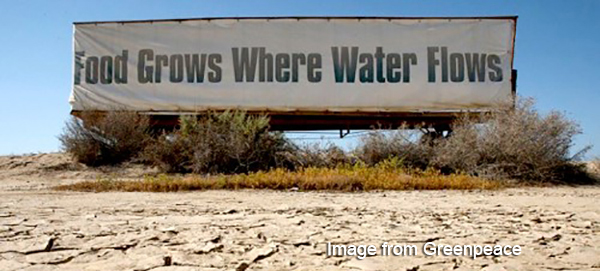
Lawns turning brown, lakes reduced to mere puddles. This California drought is like no other. How is it affecting Project Open Hand’s kitchen and operations? To find out, we talked to Martin McReynolds, our manager of food operations.
Q: How has the drought impacted food prices?
We continually monitor our food budget, and carefully watch how things like weather and drought can impact costs. We have only been seeing significant changes over the past ten months, and for produce it’s only been about a 3% increase, which is average. Beef, on the other hand, has increased dramatically in price – up 65%. Many California cattle farmers have abandoned their hay and corn crops and sold their cattle farther east, so it is the most expensive commodity that we purchase right now by far.
Q: How do you minimize the impact of rising prices?
We are doing that in two key ways. First, we are very mindful of using seasonal items so we are not paying inflated prices for out-of-season produce. Second, we are negotiating our contracts much further in advance and locking in prices for longer periods because of the drought. About eight months ago I started negotiating contracts on big-ticket commodity items that we use, such as onions, broccoli, pineapple, and oranges. I’m working with Natalie, our point person at FreshPoint in Union City – which is our primary produce supplier – and we have agreed upon prices that Project Open Hand will pay that are locked in, even if prices rise as the drought continues. That said, if the price goes down, we can still pay that lower price. FreshPoint is a great partner that has a full understanding of Project Open Hand’s mission, and supports us through these types of pricing fluctuations.
Q: Are there any foods that will now be removed or limited in meals?
We frequently adapt our menu so that we can continue to cost-effectively serve nutritious, well-balanced meals as well as a variety of foods and flavors. For example, we have strategically moved beef around on our menu in response to the big price jump. On high production days, we will use more affordable proteins like chicken, whereas on small production days we go with beef as the primary protein. With that being said, giving our clients a variety is still important to us. If they’re getting the same thing every day they’re probably not going to eat it, and what we want our clients to do is eat our food, which is so essential to their wellbeing.
Q: Do you have a fallback plan if prices do get too high?
I work closely with our very talented chefs to stay within our budget and adapt our menus so that we can choose affordable food items while still maintaining taste and nutrition in our meals. Our vendors have also been essential in helping us forecast prices. If prices are going to be very high, they advise us to choose different items, be that a produce or protein. Having close relationships with our vendors is key to helping us control costs while continuing to meet our clients’ nutritional needs.
